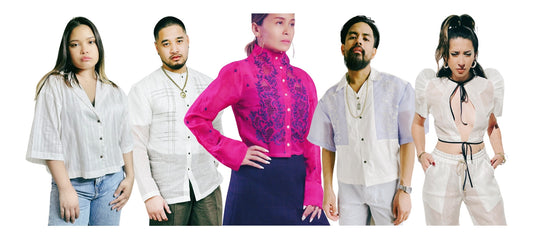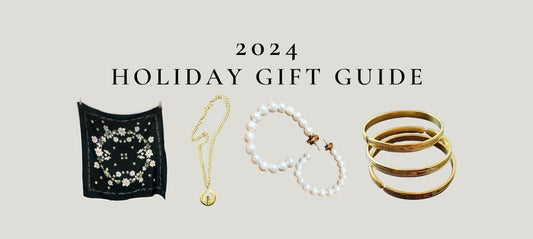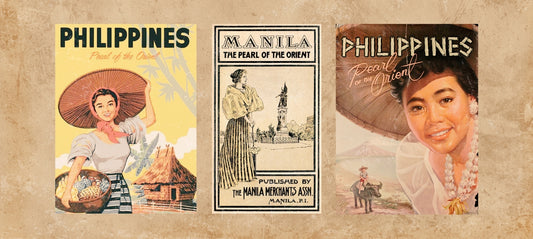In an open letter to Filipinxs in the diaspora, VINTA Gallery founder Caroline Mangosing urged the Filipinx community to do the work of decolonizing and digging deeper to know ourselves. In the context of fashion and design, decolonization could mean many things to many people and brands. For VINTA, it means centring Filipinx voices, stories and their work, in an effort to reclaim our own culture. Designer, educator and member of the research group Decolonising Design, Danah Abdulla, said it best: “Decolonizing is about shattering the familiar.”
In a previous article, we outlined the rich and interesting history of the Barong Tagalog in all its embroidered glory. If you ask us, the barong is one of the most elegant pieces of artwork one can wear — and should be a staple in all Filipino men’s wardrobes. At the same time, the barong carries with it a long history of trauma and discrimination. In the past, it was believed that Spanish colonizers forced native Filipinos to keep their transparent barongs untucked and without pockets to distinguish them from the ruling class and to prove that the wearer was not stealing or carrying a weapon. Meant to police the native “Indios,” it served as a constant and painful reminder that they will always be oppressed.
Spanish colonizers forced native Filipinos to style their barongs a certain way based on their class. Eleuterio Dominador Lantocan, 1870.
Stories like these and other parts of Filipino history were literally stitched into certain barong styles. After the inauguration of the Philippine Commonwealth in 1935, for example, came the “Commonwealth Barong Tagalog,” featuring the Philippine Commonwealth flag with the red, white and blue stripes, alongside the American flag. This is where the Filipino’s “American Dream” began to take hold.
“Embellishments of embroidery have evolved the plain baro over the centuries,” Caroline mentions. “There are Chinese, Arabic, and of course Spanish sense of colour and design has influenced this evolution. I have mentioned before in interviews that I feel like the barong really stopped evolving in the 80s when the taste for it became exiled along with the nation's former dictator and his family.”
As with many of VINTA’s modern Filipiniana pieces, Caroline’s mission has always been to “shatter the familiar,” designing outside the box and pushing the envelope of traditional Filipiniana to help in its evolution, as we’ve seen with VINTA’s Filipiniana terno dresses. One of the elements that makes VINTA barongs different from some of the traditional barongs of the past, and even the current styles in the market today, is its stiffness. “The traditional barong maker usually adds this opaque stiff interfacing in the collar and cuffs,” Caroline says. “VINTA barongs do not have that, so the collar and cuffs are only as firm as two layers of organza, still translucent, and comfortable to wear. When we first started, I couldn't achieve the half open pechera cut without the barong being cut too wide because it's impossible to get into otherwise, so we didn't make them. My earlier designs were only full open cuts with a slim silhouette. That unflattering boxy half open cut is the main reason many stylish Filipino men do not wear barongs, because it's horribly unflattering. We have recently created a design with the traditional half open cut, I added an invisible side zipper for ease in entry. This way we are able to still give it a slim silhouette. That new pechera barong is going to be released very soon!”
VINTA Men's Classic Barong features a full open, button down style with a new modern silhouette, cut closer to the body.
Another, and perhaps the most noticeable, difference between VINTA barongs and mass market styles is its unique, hand-manipulated embroidery designs. Last summer, we were beyond excited to have brought on 21-year-old queer artist and illustrator from Cavite, Philippine, John Chesleigh Nofiel (known as Alaga At Sining meaning “alagad” servant or disciple “ng” of “sining” art) as our in-house surface designer. Caroline gravitated towards his vast knowledge about botany, in particular species that are found in the Philippines, as well as his strong, native connection to the barong.
VINTA's 21-year-old Surface Designer Chesleigh Nofiel in the Unisex Striped Linen Weekender Barong, featuring Filipino Tropico II.
“And that's the thing I had always wanted to do, is to update the very Victorian (i.e. European) influence in the barong embroidery motifs on Philippine barongs,” Caroline adds. “It never made sense to me that the embroidery motifs were just these swirls and generic flowers. Here we are with this deep tradition in embroidery, so why don't we decolonize the design and make our traditional garment make sense to us?"
"
Chesleigh came back to me with the Filipino Tropico series concept of flora and fauna endemic to the Philippine archipelago. What I love is the detail in his research and his vast knowledge of Philippine flowers, plants, trees, birds, and where they can be found and if their habitat is being threatened by environmental degradation. I mean, I have learned so much from him already! I came at it thinking I just want pretty Philippine flowers, and he came in and blew me away.”
A close-up of the intricate detailing of Chesleigh Nofiel's Filipino Tropico I embroidery design.
Many of
Chesleigh's embroidery designs can be found in our newest barong launches, from the Filipino Tropico I design on our updated Classic Barong and New Chinoy Barong to the Filipino Tropico IV lining our women’s Ruffle Barong. Not only does his knowledge about Philippine flora and fauna run deep, but so does his philosophy and beliefs on decolonization through design.
“Looking back at history, the Philippines was colonized for its natural resources,”
Chesleigh explains. “Our country is one of the world’s largest archipelago nations and because of its archipelagic nature, the Philippines is a culturally diverse country. With its topography consisting of mountainous terrains, dense forests, plains and coastal areas, the Philippines is rich in biodiversity. It is considered as one of the mega biodiversity countries in the world with a high percentage of flora and fauna endemism.”
“Bago pa tayo napagharian ng kolonyalistang Espanyol, noon pa lang ay nauna na tayong naipakilala sa sining ng pagbuburda ng mga Chino at mga Indiyano. Lumaganap at mas nahubog ang tradisyon sa pagbuburda sa ating bansa noong naturuan tayong ng mga madreng Pransiskano sa Laguna. Doon pa lang ay ‘yung disenyo ng burda ay masasabi nating produkto pa rin ng kolonisasyon, kaya ‘yung ilang mga elements in design are not that really ‘Filipino.’” [Before the Spanish colonialist rule, we were first introduced to the art of embroidery by the Chinese and Indians. The tradition of embroidery in our country grew and became more and more popular when we were taught by the Franciscan brothers in Laguna. In the past, embroidery design is still a product of colonization, so some elements in design are not that really 'Filipino.']
Chesleigh continues on to ask, so what makes an embroidery Filipino? “Ang sagot dito ay — kapag ang gumawa ay pawang Pilipino at para sa Pilipino.” [The answer is — when the maker is Filipino and it is made for the Filipino.]

The Ruffle Barong features the Filipino Tropico IV design, which includes the Kalaw hornbill, Kibatalia puberula, Paphiopedilum ciliolare, Phalaenopsis lindenii, Aerides leeana, Vanda javierae plants.
Exceptionally lush and full of life, Filipino Tropico, as Chesleigh describes, is a series of designs featuring the meticulous details of the balance of nature within the Philippine tropics. Growing before the viewer’s eyes, the design elements of Filipino Tropico engages the viewer’s attention and senses vivid detail, dramatic perspective and lifelike accuracy of the Philippine flora and fauna. Take a closer look at the New Chinoy Barong, for example — Chesleigh’s favourite — and you’ll see the threatened species of Visayan hornbills, the official national leaf of the Philippines, the anahaw and a variety of gingers that makes up the family of plants with high endemism in our country.
The New Chinoy Barong, with a fully open button up front and a micro Mandarin collar.
“With my knowledge and nationalism, my mission and philosophy for designing for VINTA is to tell stories about our culture and nature with nurture. Not only that, I want to decolonize and uphold the ‘Kulturang Pagdidiwata’ [Harmony with the Deities, Creative Forces of Nature and Ancestral Spirits, where art, myth, ritual, work and activities of everyday life are all integrated into one] of our ancestors — in which part of our relationship with nature cannot be separated in how we live and in what we wear, but also by featuring our native species that are in the brink of extinction due to capitalist and imperialist exploitation and illegal wildlife trade.”
Decolonizing through design is learning how we can take control of our own narrative and present our stories through art, creativity and education in our everyday lives — and wardrobes.
A Few Tips on How to Style a Barong, from Caroline and
Chesleigh:
We couldn’t leave without sharing some of the best tips on how to style a barong from these fashionable Filipinxs.
Since he could remember, Chesleigh has always loved and embraced Filipino culture and fashion at a young age. “Ay palagi na ‘kong galak magsoot ng barong, nakaka-boost siya sa pakiramdam at presko sa pakiramdam dahil bagay talaga sa klima ng Pilipinas.”
[I have always been into wearing a barong, it makes me feel elevated and it’s cool and fresh to wear because it suits the Philippine climate.]
He remembers actively participating in folk dance performances at school and wearing the barong felt fun and enigmatic. “There was even a time our school principal got mad at me during a Friday Mass for over-accessorizing and pairing the barong with a different garment for a play — wala lang talaga silang fashion sense kaya [they just don’t have the fashion sense, so] I got called out,” Chesleigh laughs.
His number one advice when wearing a barong: “What I learned from being Pilipino is our ancestors have always had a knack for unorthodox and decorative. Over-accessorize or pair it with anything, it’s gonna work. What’s important is you own it and you wear it with confidence and pride.”
For first-time barong-wearers, Caroline has three helpful tips on how to flex a barong with style. Her number one rule: “Try pairing your barong with something that's NOT black (unless it's a black barong then by all means hit that monochromatic look!). If you must wear black pants, try wearing a nude coloured t-shirt underneath to tone down the contrast. And please tuck your undershirt into your pants! I know North American grown Pinoys often feel funny about it, but please trust me, it looks cleaner, more flattering, and proper. Make sure your pants fit well.”
“I also love styling gentlemen with suspenders worn underneath the barong,” Caroline adds. “You can get a contrasting colour so it shows through. This way of styling was de rigeuer back in the early 1900s up to the 1930s. Still looks very classic.”
Manuel with VINTA's Black Tunic Barong with black suspenders underneath.

Little Rizal in style, wearing his barong with suspenders underneath, too.
Lastly, Caroline says, “Try pairing your barong with a malong! Usually a black barong looks really good with the gem coloured malongs with metallic thread. It's like mixing metaphors from Luzon to Mindanao. I had a groom who did that based on seeing one of my styled photos on IG, and he wore combat boots too. He looked so tough.”
Darrel in VINTA's Black Tunic Barong paired with a malong skirt.
VINTA Gallery carries a limited selection of ready-to-wear Men’s Barongs. Each barong is handcrafted by Master Lita and the VINTA Gallery team in our atelier in the Philippines. Explore them here.
Shop our full collection of Women’s Barongs here and the Unisex Striped Linen Weekender Barong here.
Good news! We are now taking orders for VINTA Bespoke Barongs for 2021. These can be completely customized, from the fabric to buttons, to embroidery style, vertical or u-shaped (or pechera), collar style. Please contact us to discuss all the possibilities by emailing us at info@vintagallery.com or by using our Contact Form.









